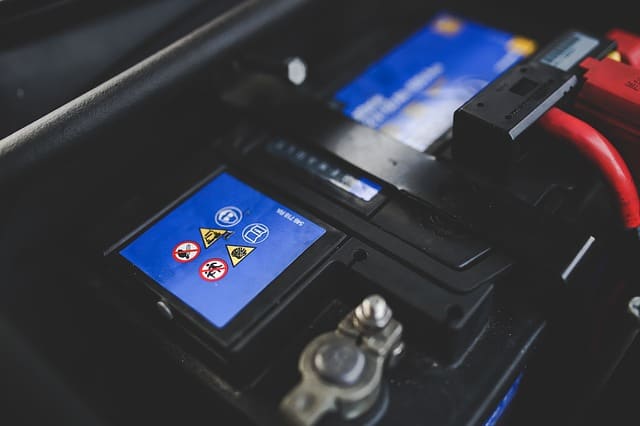Last Updated on March 1, 2025 by Nate Schnell
Checking your car battery’s voltage is an essential part of vehicle maintenance. Instead of waiting until your car won’t start, testing your battery regularly can help prevent unexpected failures. A properly charged battery ensures your vehicle starts reliably and that all electrical components function correctly.
What Is the Voltage of a Car Battery?
A standard car battery operates at 12 volts (12V). However, this value can fluctuate depending on whether the engine is running or not. When the car is off, a fully charged battery should have a voltage of 12.6 volts or higher. When the engine is running, the alternator charges the battery, increasing the voltage to between 13.7 and 14.7 volts. If your battery’s voltage falls below 12V when the engine is off, it could be weak and in need of a charge or replacement.
How to Test Car Battery Voltage
Testing your car battery with a multimeter is simple and requires only a few steps:
- Set the multimeter to DC voltage (20V setting).
- Turn off the engine and remove the key.
- Connect the red probe to the positive terminal and the black probe to the negative terminal.
- Read the voltage displayed on the multimeter:
- 12.6V or higher – Battery is fully charged.
- 12.4V to 12.6V – Battery is partially charged but still functional.
- Below 12.4V – Battery is weak and may struggle to start the car.
- Below 10.5V – Battery is likely dead and needs replacement.
- Start the engine and test the voltage again:
- 13.7V to 14.7V – The alternator is properly charging the battery.
- Below 13.2V – Possible alternator issue; the battery may not be charging correctly.
- Above 15V – The alternator may be overcharging, which can damage the battery.
Car Battery Voltage Chart
Understanding voltage readings can help determine the health of your battery:
- 12.7V – 12.6V: 100% charge
- 12.5V – 12.4V: 80% charge
- 12.3V – 12.2V: 60% charge
- 12.1V – 12.0V: 40% charge
- 11.9V – 11.8V: 20% charge (may not start the car)
- Below 11.8V: Battery is deeply discharged and may not recover
What Voltage Should a Car Battery Have When Running?
With the engine running, the battery should have a voltage reading between 13.7V and 14.7V. This indicates that the alternator is working correctly and keeping the battery charged. If the voltage is below 13.2V, your battery might not be charging properly, possibly due to a failing alternator or loose connections. If the voltage is higher than 15V, it could indicate an overcharging issue, which can shorten the battery’s lifespan.
Car Battery Amperes and Cranking Power
While voltage is important, amperage also plays a role in a battery’s ability to start a car. Car batteries typically have a cold cranking amps (CCA) rating, which measures the battery’s ability to start an engine in cold conditions. A higher CCA rating means better performance in colder climates.
- Standard batteries range between 550 to 1000 amps.
- Cold Cranking Amps (CCA) indicates how many amps a battery can provide at 0°F (-18°C) for 30 seconds.
- Cranking Amps (CA) is measured at 32°F (0°C) and is typically higher than CCA.
How Long Can a Car Battery Sit Without Losing Charge?
A car battery will naturally self-discharge over time. On average, a battery can last 4-6 weeks without being used before it starts losing charge. Extreme temperatures and older batteries can shorten this time. If you don’t drive often, using a battery maintainer or trickle charger can help keep your battery fully charged.
Preventing Battery Voltage Issues
- Check voltage regularly to avoid unexpected battery failures.
- Clean battery terminals to prevent corrosion from affecting voltage output.
- Ensure the alternator is working properly to keep the battery charged.
- Avoid frequent short trips, as they don’t allow the battery to fully recharge.
- Use a battery maintainer if your car is not driven often.
Final Thoughts
Monitoring your car battery’s voltage is an easy way to ensure your vehicle remains reliable. Regular testing with a multimeter can help detect potential battery or alternator issues before they cause a breakdown. If your battery consistently reads low voltage, consider recharging or replacing it to avoid being stranded with a dead car. Keeping your battery in good health will not only extend its lifespan but also ensure a trouble-free driving experience.



